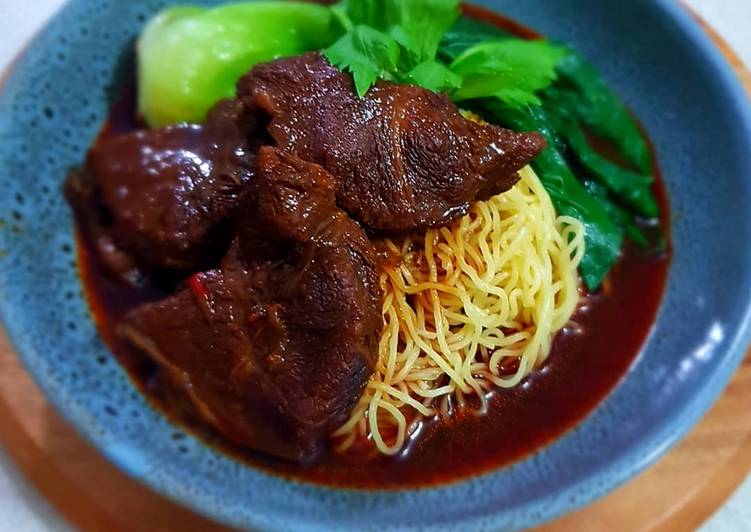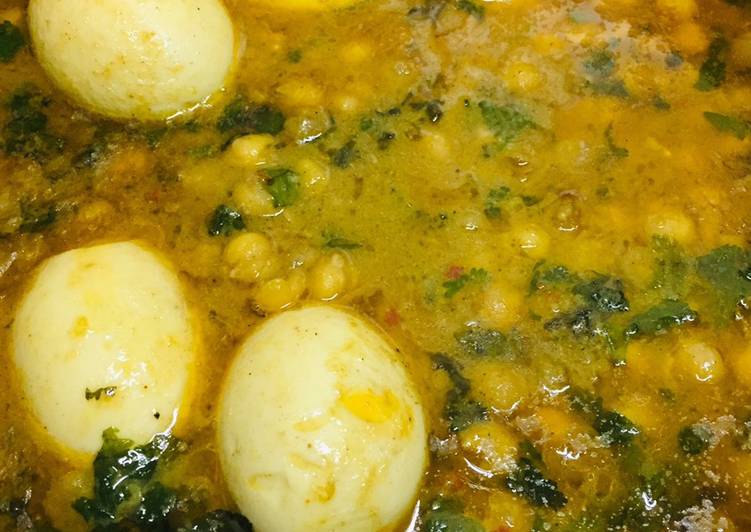
Hello everybody, I hope you are having an amazing day today. Today, I will show you a way to make a special dish, taiwanese beef noodles soup. It is one of my favorites. This time, I will make it a little bit unique. This will be really delicious.
Remove the meat from the pot, rinse in cold water, and cut into thick slices. It's delicious-tender beef, a rich and slightly spicy broth, fresh noodles, a little bok choy, and that absolutely necessary fistful of Chinese pickled mustard greens and fresh scallions and cilantro. The result is a perfectly orchestrated bowl of spicy, savory, fresh, salty deliciousness.
Taiwanese Beef Noodles Soup is one of the most favored of recent trending foods on earth. It is easy, it’s quick, it tastes yummy. It’s enjoyed by millions every day. They’re fine and they look wonderful. Taiwanese Beef Noodles Soup is something which I’ve loved my entire life.
To begin with this particular recipe, we must first prepare a few ingredients. You can have taiwanese beef noodles soup using 18 ingredients and 3 steps. Here is how you cook it.
The ingredients needed to make Taiwanese Beef Noodles Soup:
- Prepare 3 tablespoon olive oil
- Get 1 onion, sliced
- Make ready 4 garlic cloves
- Take 4 spring onions
- Get 3 large red chilli, deseeded
- Make ready 3 tablespoon hot been sauce
- Get 3 tomatoes, cut into wedges
- Prepare 2 tablespoon brown sugar
- Get 1/4 cup dark soy sauce
- Get 1/2 cup soy sauce
- Get 1/2 cup cooking chinese cooking wine
- Take 2 star anise
- Take 1 kg beef chuck, cut into roughly 4 cm cubes
- Prepare 3 cups beef stock
- Get 2 small bunches of bok choy, halved and quickly blanched in boil
- Prepare 200 gram cooked egg noodles
- Get to taste Salt and sugar
- Get Coriander or spring onions or coriander to serve
Beef noodle soup is a noodle soup made of stewed or red braised beef, beef broth, vegetables and Chinese noodles. It exists in various forms throughout East and Southeast Asia. The Clear Broth Beef noodle soup was allegedly invented by the Hui people during the Tang dynasty and is commonly known as Lanzhou beef noodle soup. It is spread throughout China, and according to the variety of ingredients and different cooking methods that take every place has its unique taste.
Instructions to make Taiwanese Beef Noodles Soup:
- Heat the oil in the pot over medium-high heat. Add the onion, garlic, spring onions and chillies. Stir-fry for 2-3 minutes or until the onions have softened but not coloured. Add the hot been sauce and stir-fry for another minute.
- Then stir through the tomatoes and the brown sugar. Now add the dark soy sauce, soy sauce, Chinese wine and the star anise. Add the beef and mix to combine. Add the beef stock and 2 cups of water. Mix to combine. And cook about 2 hours or more.
- After couple hours, and the meet are cook and tender, then taste the soup. Divide the noodles among serving bowls. Top with bok choy and chunks of beef. Ladle over the soup. And sprinkle parsley or spring onions or coriander on the top and serve.
For example, Sichuan's spicy beef noodle soup, Lanzhou's beef noodle soup and Taiwan's braised beef noodle soup are. I'm from Taiwan originally and my husband lived there for many years, we both agree this recipe is very authentic, its probably better than a lot of of Taiwanese restaurants' beef noodle soup. Beef noodle soup possibly is the most favorited Chinese style noodle soup. Every noodle restaurant serve their own beef noodle. You can find beef hand pulled noodles (牛肉拉面) in Lanzhou noodle restaurant, a spicy Sichuan style braised beef noodle in a Sichuan restaurant, a much milder taiwanese braised beef noodle (台式红烧牛肉) in.
So that is going to wrap it up for this special food taiwanese beef noodles soup recipe. Thanks so much for your time. I am confident that you will make this at home. There is gonna be interesting food at home recipes coming up. Remember to bookmark this page in your browser, and share it to your family, friends and colleague. Thanks again for reading. Go on get cooking!

